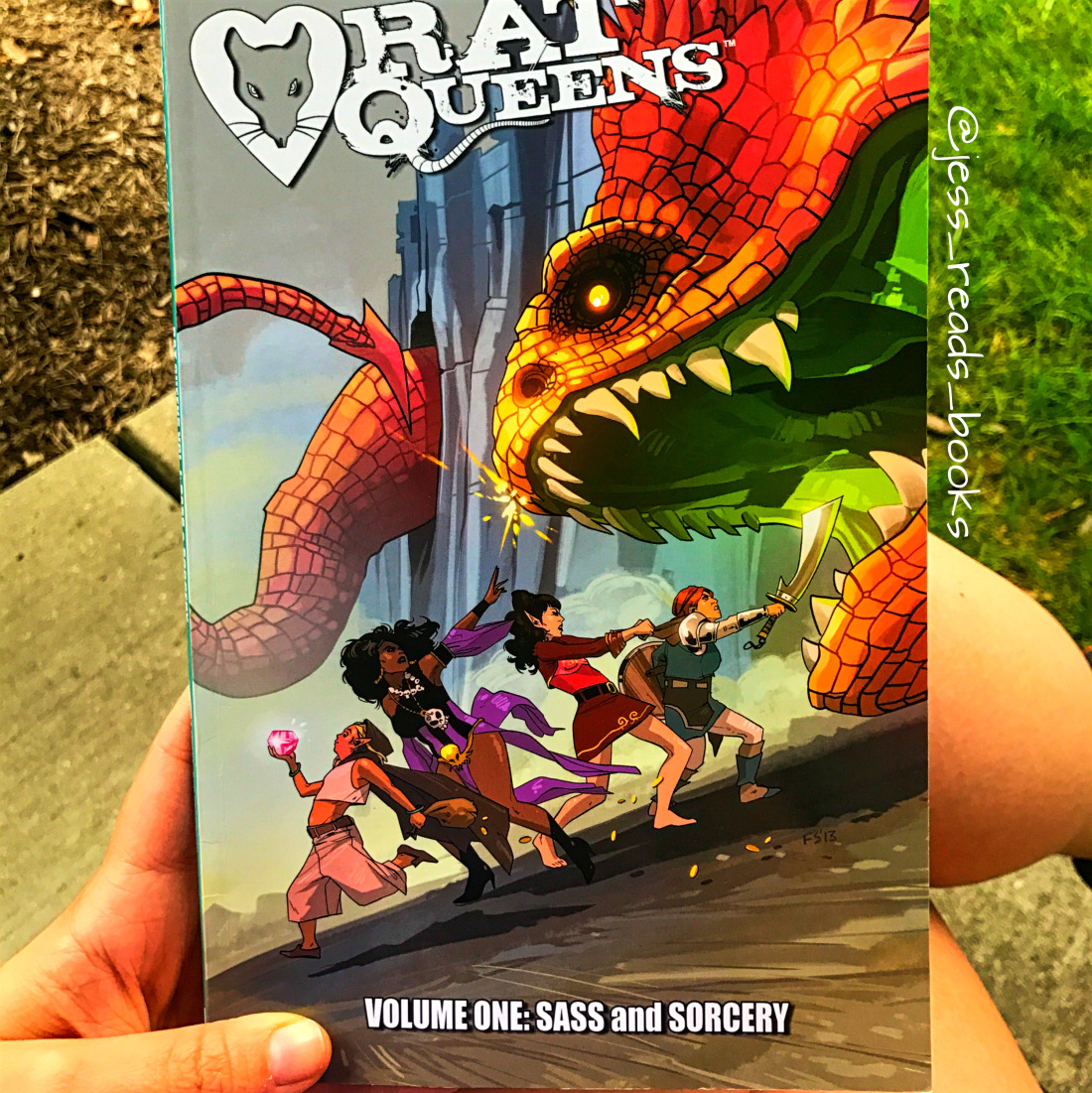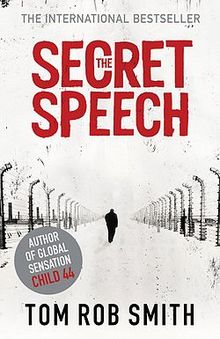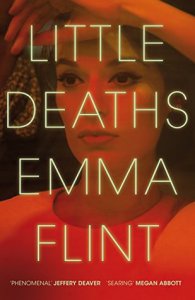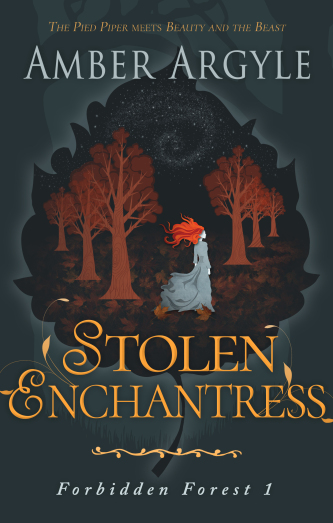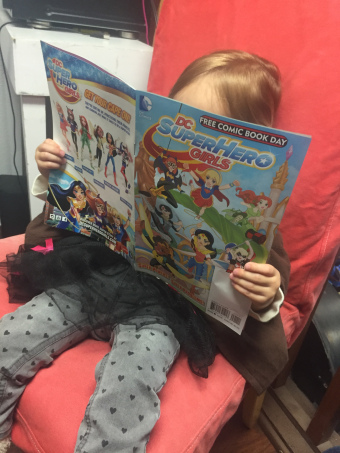 Photo by Fawn Kemble
Photo by Fawn Kemble
There are a shocking lack of statistics pertaining to the number of women who read comic books.
The almost total absence of information relating to female readers suggests publishers and retailers don’t find women significant enough to factor into their sales data.
According to The Atlantic, this wasn’t always the case. In the 1940s, comic book stories were more inclusive when it came to gender. According to a market research report from 1944, 91% of girls ages 6 to 11 read comics, as did 81% of girls 12 to 17, while 28% of women, 18 to 20, partook of the pastime.
While this is clearly no longer the case, anecdotal evidence — and a few ambitious attempts to crunch the numbers (see the website graphicpolicy.com, for instance) — points to a growing population of female comic book fans. The industry, meanwhile, has seen an influx in women writers and artists.
While it’s disappointing that female comic book readership can’t even be quantified, the cold, hard fact remains that fans of the medium are largely male — or viewed as such — and women readers are still considered a rarity.
If this is ever going to change, a new generation of girls must be introduced to comic books and encouraged to feel they belong in the world of sequential art.
(Specific demographic information does indicate that comic book readers are skewing older, so it can’t hurt to introduce young boys to the medium as well.)
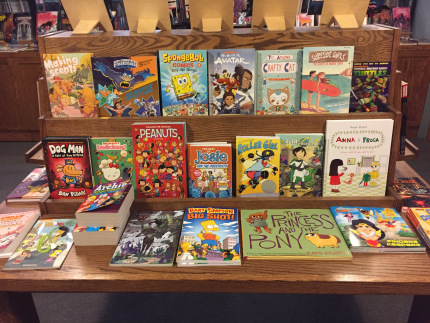 A display of comic books and graphic novels targeted to girls at The Last Bookstore in downtown Los Angeles. Photo by Fawn Kemble.
A display of comic books and graphic novels targeted to girls at The Last Bookstore in downtown Los Angeles. Photo by Fawn Kemble.
You might ask, “Why bother introducing girls to comic books?”
The benefits of teaching daughters, granddaughters, or nieces, or little friends to understand and appreciate the medium are many, from sparking a lifelong love of reading, to introducing them to strong, female role models, to giving them fluency in a visual language that inspires creativity and challenges the intellect.
It’s also fairly obvious that our society is currently steeped in comic book culture with a powerful craving for superhero myths — from the success of the Marvel movie multiverse to the recent box-office domination of “Wonder Woman.” It can only be positive for girls to see themselves represented in this phenomenon.
The task of introducing young girls to comics isn’t necessarily an easy one. The adult content of the traditional Marvel and DC canons isn’t exactly appropriate for children and the industry remains awash in sexism, from the absence of three-dimensional female characters to the posters of scantily clad women you’ll find on the walls of some comic book shops.
As a mother of two girls, Brenna Humann often finds herself grappling with these issues.
“Even when (comics) was something around all the time with my brother, I felt it was never quite for me,” she said.
Humann recalls that, as a child, she was “bothered” by the sexism she encountered in comic book stores.
“It just wasn’t for girls, and that went without saying.”
Now, Humann struggles to find comic book characters her girls can relate to.
“It bothers me how my girls love superheroes so much but I don’t have much to give them. We have this DC set of board books that we keep gravitating to because they love hero stories, but they always immediately latch onto the literal one page devoted to Wonder Woman and Raven and get bored with the rest. I find they always immediately latch on to the females in any book we read.”
As a result, her family has gravitated to more “gender neutral” material, like Pokemon.
“So, in short, we end up mostly doing hero worship without the comics.”
Humann’s husband, William Schiller, has introduced their daughters to picture-heavy manga, if only to acclimate them to “the idea of how to view a story.”
Schiller has used Naruto, One Piece, and Dragon Ball Z, though he admits he has to censor some of the content. He’s saving the classic Marvel and DC comics for when the girls are older.
“A lot of my (comics) collection will be hidden for their high school days,” he said.
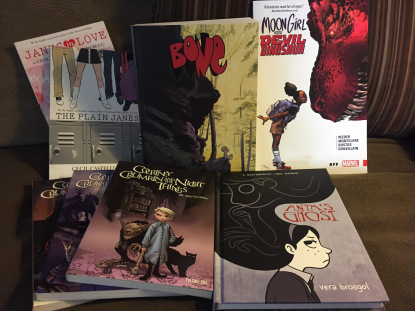 Lifelong comic book fan and elementary school librarian Fawn Kemble has an extensive collection of graphic novels that could be appealing to young female readers. Photo by Fawn Kemble.
Lifelong comic book fan and elementary school librarian Fawn Kemble has an extensive collection of graphic novels that could be appealing to young female readers. Photo by Fawn Kemble.
Elementary school librarian Fawn Kemble began reading comics as a girl, which spawned a lifelong interest in the medium. As a high school teacher, she often taught graphic novels in her English classes.
“My love of comics came from just reading Amazing Spider-Man, Bone, The Maxx, X-Men. Also, I used to love the Uncle Scrooge comics.”
The girls who frequent her library tend to gravitate to the “Adventure Time” graphic novels.
“I think comic writers should keep both male and female readers in mind when writing any story and not just fall into the old, male-centric style of the past,” Kemble said. “Many comic fans are women, so they should remember that.”
The librarian suggested taking a gender neutral approach when introducing girls to comics. Otherwise, they tend to be pushed toward an inordinate amount of romantic storylines.
“I’m also a firm believer that girls should read regular comics, too, not just ones targeted to them.”
Bay Area residents Michelle and Roy Pollock began reading graphic novels to their daughter Georgia when she was 2.
Georgia’s first comics were the online fairy tale retellings “Erstwhile Tales.”
“We only read her certain ones and glossed over some aspects,” Michelle said, noting that “Erstwhile Tales” feature strong female characters.
Strong female characters are a theme in the Pollock household. They’ve since advanced to “The Unbeatable Squirrel Girl” and the “Valor” comic anthology – “the artwork is wonderful and the women range in sexuality and race,” Michelle said.
Another tricky element to introducing your daughter to comic books is discovering and accepting that their tastes may be wildly different than yours.
Columbus, Ohio, mom Kirsten Kerr said her 8-year-old daughter Lyla has definite opinions about what she wants to read.
“Right now she finds a lot of comics too busy, but does like the style of book that’s almost like a diary (ie., ‘The Tapper Twins’),” Kerr said. “I think they take a lot of their sensibility from comics.”
“Her tastes are very different from mine,” she said, somewhat ruefully.
“She has already said no Stars Wars and no Harry Potter.”
Schiller said he doesn’t think it’s as important what comic books girls are reading, as long as they are reading.
“Don’t limit reading to anything (in particular). Just hook ‘em.”
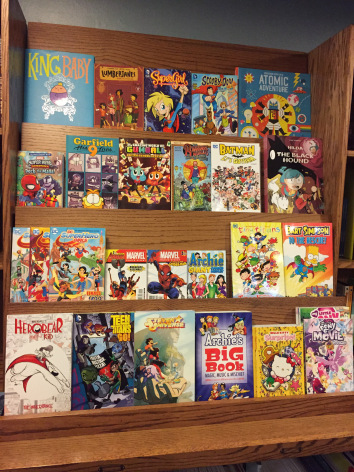 The Last Bookstores in Los Angeles features a wide array of comic books and graphic novels geared toward girls. Photo by Fawn Kemble.
The Last Bookstores in Los Angeles features a wide array of comic books and graphic novels geared toward girls. Photo by Fawn Kemble.
If you’re wondering where to begin when introducing girls to comic books, here’s a list to get you started.
You can find comics, graphic novels, manga, and other related materials at your local library or comic book shop (they’re not all full of sexist posters), as well as bookstores and Amazon.com.
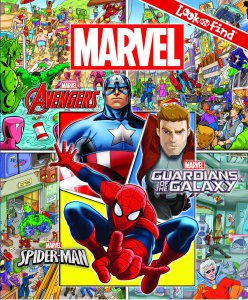
Brainwash Your Baby
Marvel’s Look and Find books: Marvel’s series of Look and Find pictures books might be the perfect starting point to indoctrinate your child in all things superhero.
5-Minute Marvel Stories: Series of super-quick Marvel superhero sagas make for ideal bedtime story material. Ages preschool and older. Marvel Press.
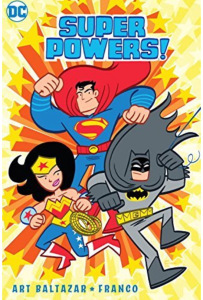
For the Littlest Readers
“Tiny Titans”: The Teen Titans morph into Tot Titans and share misadventures at Sidekick Elementary School. Official recommendation is ages 7-10, but reviewers suggest they’re suitable for preschoolers to second graders. By Franco Aureliani and Art Baltazar, DC Comics.
“Super Powers”: The Justice League is dispatched to locate the missing Batman. All ages. By Franco Aureliani and Art Baltazar, DC Comics.
“My Little Pony: Friendship is Magic”: The ‘80s toy franchise reboot is set in Ponyville, home of Twilight Sparkle, Rainbow Dash, Rarity, Fluttershy, Pinkie Pie, and Applejack. Ages 4-8. By Katie Cook and Andy Price, IDW Publishing.
“Itty Bitty Comics”: Kid-size comic adaptations include The Mask and Hellboy. Ages 3-7. By Franco Aureliani and Art Baltazar, Dark Horse Comics.
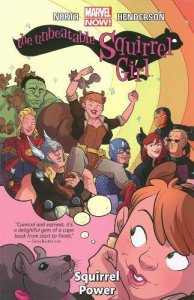
For Elementary School/Pre-Teen Readers
“DC Superhero Girls”: DC Comics series reimagines classic heroes and villains, including Wonder Woman, Batgirl, Supergirl, Harley Quinn, and Poison Ivy as teens attending Super Hero High. Ages 8-12. By Shea Fontana, DC Comics.
“Hildafolk”: The heroine of the “Hildafolk” series loves exploring her enchanted world, a place with trolls, talking crows, and mountains that move. Ages 6 to 10. By Luke Pearson, Flying Eye Books.
“Teen Titans Go!”: Frenetic animated TV show adaptation stars Beast Boy, Raven, Starfire, Robin, and Cyborg. Ages 7-10. By Sholly Fisch and Lea Hernandez, DC Comics.
“Abigail & the Snowman”: Whimsical graphic novel details the friendship between a 9-year-old girl and a yeti who escapes from a government facility. Age 8 and older. By Roger Langridge, KaBOOM!
“The Unbeatable Squirrel Girl”: Meet Doreen Green, college freshman, friend of Tony Stark, and upbeat superhero with squirrel-like powers. Age 8 and older. By Ryan North and Erica Henderson, Marvel.
“Courtney Crumrin”: Tales of a girl who moves into her uncle’s spooky, old house are perfect for kids with a goth side. Age 7 and older. By Ted Naifeh, Oni Press.
“Ghosts”: A girls learns to put aside her fears for the sake of her sister, who suffers from cystic fibrosis. Ages 8-12. By Raina Telgemeier, GRAPHIX.
“Zita the Spacegirl Adventures”: Series features an intergalactic heroine. Ages 8-12. By Ben Hatke, First Second Books.
“Bone”: Award-winning graphic novel series, considered one of the best of all time, tells the story of three misfit cousins who are run out of Boneville and lost in a vast desert. Age 9 and older. By Jeff Smith, Cartoon Books.
“Phoebe and Her Unicorn”: Syndicated comics series depicts the friendship between an awkward girl and an arrogant unicorn. Ages 8-12. By Dana Simpson, Andrews McMeel Publishing.
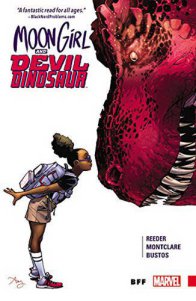
For Teen Readers
“Moon Girl and Devil Dinosaur”: Marvel team-up between a pre-teen super genius with inhuman genes and a savage tyrant teleported from the prehistoric past. By Brandon Montclare and Amy Reeder, Marvel Unlimited.
Charmz: A new line of romance comics, including “Chloe the New Girl,” “Stitched,” and “Sweeties.” Ages 10-14. From Papercutz, edited by Mariah Heuhner of groundbreaking teen graphic novel line Minx.
“Anya’s Ghost”: A misfit finds her new BFF at the bottom of a well. Ages 12-17. By Vera Brosgol, Square Fish.
“The Plain Janes”: Three lunch buddy rejects named Jane form a secret art gang. Grades 7-10. By Cecil Castellucci and Jim Rugg, Vertigo.
“Nimona”: Celebrated web comic mashes up medieval culture, science, and technology. By Noelle Stevenson, HarperTeen.
Contributors to this post: Fawn Kemble, Kristy Rivas, Shawna of earthtoshawna.com, Brenna Humann, Tanissa Potrovitza Schoen, Kirsten Kerr, Michelle Pollock.
Photos: Amazon.
Share this: